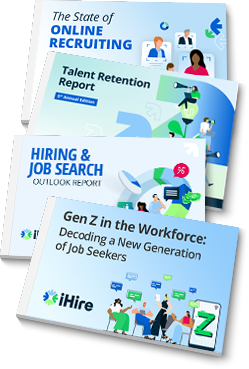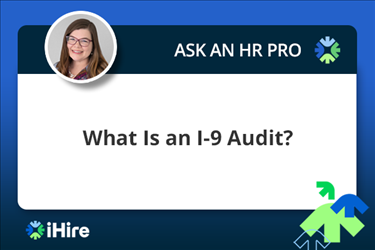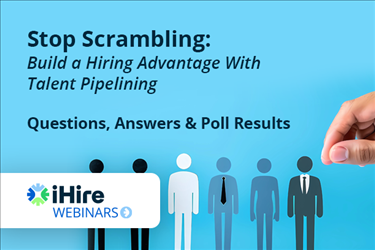- Employer Resources
- |
- Last Updated: May 12, 2025

Recruitment Marketing 101: Where Hiring Meets Brand Storytelling
You already put effort into winning new customers, but what about job candidates? Recruitment marketing sits at the intersection of employer branding and talent acquisition, where your identity meets your hiring strategy. The best results happen when you find and place the right people who want to work for you.
In today’s talent market, you have to market your company to job seekers like you do to clients. That means leading with culture, values, and vision and not just listing tasks and requirements. Top candidates have options, and with application processes often long and complicated, they’re doing their homework. This is why recruitment marketing helps you show up strong before they even think about applying.
So, you might ask, what is recruitment marketing and how do you attract talent with recruitment marketing? Let’s dive in.
What Is Recruitment Marketing and Why Does It Matter?
Recruitment marketing is about attracting candidates before they’re actively looking. It’s proactive, using content and storytelling to build interest long before someone applies.
This approach blends employer branding with talent pipeline strategy. You get to shape how people see your company and what it’s like to work there.
In today’s job market, where attention is short and there are diverse options, this matters.
The difference between recruiting and recruitment marketing
Recruiting is reactive – you post a job when there’s a need. Recruitment marketing is proactive. It builds awareness and interest before a role opens.
Instead of waiting for applicants, you’re already sharing team stories, highlighting growth, and showing how tools like automation for accounting firms make work more rewarding.
Marketing keeps your brand visible and top of mind. It shifts hiring from last-minute hustle to long-term strategy.
The modern candidate journey
Job seekers today research and compare employers before applying. They check reviews, social media, and even your CEO’s LinkedIn profile.
Maybe they first spot your company on Instagram and then visit your site. It might not be until later that they see a job ad. Modern recruiting happens across multiple touchpoints.
Building a Strong Employer Brand
If recruitment marketing is the engine, your employer brand is the fuel. It’s the story of who you are and what your company is all about. A clear, consistent brand attracts the right candidates. Platforms like iHire help you bring that story to life by connecting your employer brand with the right audience across industry-focused talent communities.
Your brand should reflect your values. When candidates understand your culture before applying, you’ve already made an impact.
Don’t forget your online reputation. Reviews on platforms like Glassdoor and LinkedIn can influence whether candidates see your job as an opportunity or just another listing.
Steps to building a strong employer brand:
- Crafting an authentic brand narrative: Tell real stories that highlight what your team cares about and what work looks like on a normal day. Let employees share their voices and casual wins – authenticity builds trust and sticks with candidates.
- Showcasing your team and culture: Show your culture with behind-the-scenes moments via social media posts or stories; for example, share the impact of workplace flexibility on employee satisfaction. One honest example beats 10 generic ones, and the right story will speak to the right people.
- Leveraging employee advocacy: When your team is proud of where they work, they’ll talk about it – and that’s powerful. Make it easy to share by offering templates or spotlighting their content. Real employee posts feel personal and are more trusted than polished marketing.

Creating compelling content for job seekers
With your brand in place, it’s time to showcase it. Great recruiting content informs and inspires in a way that engages candidates, gently pushing them to decide to apply.
Think of the hiring funnel like a marketing one: awareness (who are you?), interest (what’s it like to work there?), and decision (is this the right fit?). Content like blogs and videos that share team stories can guide candidates through each stage.
Writing better job descriptions
Most job descriptions read like they were written by a robot on a deadline. Yours shouldn’t.
An inviting job ad is clear and written like you’re talking to a real person. Inclusive language is key, and so is being upfront about what’s in it for applicants. That means benefits, yes, but also purpose. Why does this role matter? What impact can they make? How will they grow?
Using video and social content to attract talent
Video is a game-changer. Whether it’s a 30-second Instagram reel or a quick TikTok showing “a day in the life” of one of your team members, these moments bring your culture to life.
Platform matters. Use LinkedIn to share professional wins and team stories. Hit Instagram with behind-the-scenes clips. Try TikTok for quick team intros or fun workplace trends.
And you don’t need fancy gear – just real people sharing real things. A Q&A with your team on why they love working in your business? That’s gold.
Access Hiring, Sourcing & Recruitment Marketing Tools - All in One Platform
Create Your Account Today

We Value Your Privacy
Building nurturing campaigns
Not everyone’s ready to apply right away, and that’s OK. Email drip campaigns or CRM-based touchpoints help you stay connected with people who are interested but not ready to make a move.
Segment your lists by role and seniority or industry. Then send content that feels personal: updates on openings, upcoming events, insights from leadership, or spotlights on employees doing cool stuff.
Measuring and optimizing your recruitment marketing efforts
Now comes the part that separates the guesswork from the strategy: measurement. If you’re not tracking what works, you’re flying blind.
There are plenty of key performance indicators (KPIs) to choose from. Click-through rates, application rates per job view, and time to fill are great starting points. But don’t stop there. Compare email subject lines. Try new video formats and watch candidate engagement. The more you learn, the better your outreach.
Keep an eye on recruiting KPIs that tell the full story. That means:
- Source of hire
- Cost per hire
- Application conversion rates
Also, watch your employer brand sentiment over time. Are reviews trending up? Are more people talking about your culture on social media? These signals matter.
And make sure your recruiting goals ladder up to your overall hiring needs. It’s not just about numbers – it’s about the right numbers.
Tools to support your recruitment marketing strategy
There are plenty of tools to help make this all easier. A solid CRM can manage candidate relationships. Social schedulers keep your content consistent. Analytics dashboards show what’s working and what’s not.
And while we love automation, don’t let it replace personalization. Use it to follow up faster, track interactions, and keep leads warm, but make sure there’s a human touch behind it all.
Get the Best Talent
Recruitment marketing is key in today’s competitive job market. Be unafraid to share your business’s story and show your culture through different strategies. If you highlight the growth opportunities that come from joining you, you can attract top talent even before they apply, turning hiring from a reactive task into a proactive strategy.
Explore iHire’s solutions that connect you with the right candidates, including iHire360 – our exclusive, all-in-one platform for small businesses that automates recruitment marketing, supercharges your job ads, streamlines sourcing, and more.
RELATED RESOURCES
Hiring? You're in the Right Place.
- Reach unique talent: 51% of our candidates aren't using other job boards
- Connect your ATS and get 6x more applications with iHire's apply process
- Get matching candidate resumes sent straight to your inbox
We Value Your Privacy


![Skills Over Degrees: The Future of Hiring [Video Webinar]](https://p-gpb8fhd4b9fbh6fy.z01.azurefd.net/cms/2f6c3996-55d2-41a7-92cd-801a93177d31/4adbd698-ab4c-4e81-9823-8c8cfade1f76-md.png)

